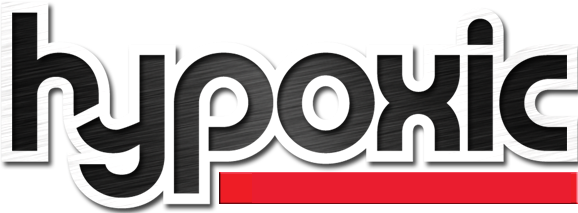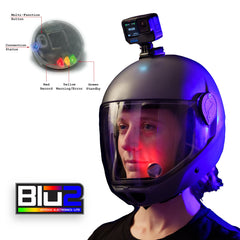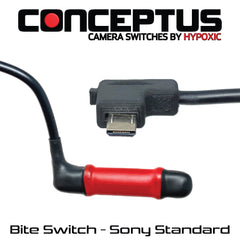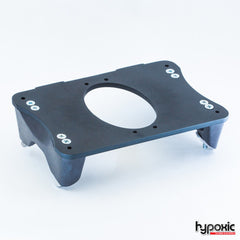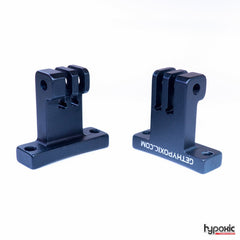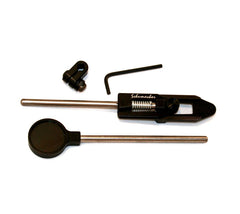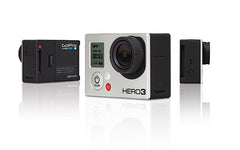GoPro for Sport Fishing
Posted by Mark Kirschenbaum on
(From 2012)
I had the pleasure to spend some time aboard the Priority Yacht during the Islamorada SailFly Invitational Tournament. As always, I brought an assortment of GoPro's and my Sony HDR-CX160 to capture the excitement. I learned a ton and the following article shares these findings. First check out the result from this tournament.
The purpose of this article is to give Captains, Fishing Guides, and Fishermen an introduction on how to capture great footage with a GoPro HD. It will teach you the fundamentals, how to setup the cameras, where they should be mounted, and various tips that will make your life easier and more profitable.
Fundamentals
There are some fundamentals that you should understand before filming your first fishing trip. All of these topics can be Googled to expand your knowledge but here are the basics. Skip this if you already know a bunch about video cameras.
Resolution / fps
You've hear people say 1080p and 30fps what does this mean? 1080P means there are 1080 pixels that vertically make up this image. Likewise 720p means the image is 720 pixels tall. This boils down to the more pixels per image the better the quality. The main trade off is with more pixels, each minute of footage takes more space on your memory card.
The 30fps is how many images make up the video each second, in this case its 30 frames (or images) per second. Why is this important? It's important because with more frames per second, the more images that are shot and therefore the more you can spread the image to make it look smooth. Wowwa, what? With more frames per second, you can make things go in really slow motion. For example , when a Tarpon bites a fly, if you record at 120fps, you could now see the fish jump out of the water, catch the fly, and dive back into the water. Instead of just a splash. As you can see, this would be very cool for fishing. The issue is the GoPro HD and the GoPro HD 2 can both trade frames per second (fps) for resolution.
FOV
The FOV is the Field of View. This is how wide the camera sees. The GoPro has the ability to record with a 170 degree field of view. This means it will see just shy of 180 degrees from the face of the camera.
As the FOV increases the distance objects appear is greater. The above screen grab was shot with the GoPro at 170degrees FOV. See how the boat's cabin appears to curve in and the image has that fishbowl appearance?
Editing and Delivery
Shooting a lot of High-def footage is easy. Dealing with it is difficult. At the end of the day, the question arises, "how are you going to edit and share this footage?" No one wants to watch 4 hours of you waiting for one fish (not even your mom). If you leave these cameras recording the whole time, you're going to have to deal with one giant blob of nothingness. Even if you are good about when you start and stop recording, you're going to still want to “trim” the video a bit before publishing. If you are on a fishing charter you may just opt to give the customer the blob and have them deal with it. This is a viable solution, but does nothing for your social networking. Another option is to find a local “editor” that can make your videos into a nice end product. This can be costly, but it can be a cost you pass on to your customer. By the way, the attention span of most people is less than 3 minutes. A lot less people want to watch a 15 minute video of you fishing.
This is where iMovie, Microsoft Movie Maker, Sony Vegas, etc. and your computer come into play. If you have a slow computer, it's probably time to upgrade to edit any of this HD footage. If your computer is on the borderline, you probably want to shoot in a lower resolution on your camera (720p @ 30fps) to make it possible to edit.
The Camera
GoPro recently introduced the GoPro HERO 2 to replace the existing GoPro HERO HD. The GoPro HERO 2 will shoot at 1080p at 170 degrees FOV and has a better lens than the GoPro HERO HD. It will also shoot 11Megapixel photos once every half a second vs. 5Megapixel stills every second. The menu system is a ton easier to use on the GoPro HD 2 vs. the GoPro HERO HD. The major plus though is the ability to stream footage out of the GoPro HERO 2 with the new WiFi BacPac add-on. This BacPac also allows the user to control up to 50 GoPro's simultaneously from up to 900' away. This is a must for boat Captains that are also controlling their cameras.
With that said, before using the GoPro on your fishing tour, make sure you have a good understanding of the menu system and limitations of the camera. Spend some time going through the options and understand what each of the icons on the screen mean (GoPro Instruction Manual / GoPro 2 Instruction Manual). If you have a Go Pro HD Hero, make sure you update it before going out on the ship. There are some great new features that will make your life easier in the latest firmware.
As far as memory cards are concerned. Go with a well known brand up to 32GB class 4 or above. Class 10 is only necessary for the GoPro HD 2 when you are bursting 2 photos a second. In my opinion, this is overkill for fishing.
Once you have learned how to operate your camera, here are the various settings that I would use and the application of each:
| Application | GoPro 2 | GoPro HERO HD |
| Primary Camera Mounted | 1080P / 30fps / 170degree FOV | 720P / 30fps = 170 FOV = R2 mode if enough distance 1080P / 30fps = 120 FOV = R5 |
| Handheld Action Camera | 720P / 60fps / 120 FOV(use LCD BacPac) | 720P / 60fps / 170 FOV = R3(use LCD BacPac) |
| Underwater | 1080P / 30fps / 170degree FOV | 720P / 30fps = 170 FOV = R2 |
| Stills | 11MP / 1 every 2 seconds | 1 every 2 seconds |
| Auxillary | 1080P / 30fps / 170degree FOV | 720P / 30fps = 170 FOV = R2 |
All the above settings have center meter exposure set. On the stills setup have it power on in PES mode (GoPro HD) or Camera on the GoPro Hero 2.
Once you have that set, I would turn on 1 button mode. This allows you to turn on the GoPro and have it immediately start recording.
Mounting
For the above video I mounted the primary camera underneath the bridge with a flat adhesive mount. I checked the angle with the LCD BacPac to ensure the cabin was framed correctly. I then tightened the thumb screw with a phillips to ensure it didn't move during operation. Next to it I mounted a second GoPro using the same method and had it set to Photo Every Second mode to capture some stills for the fishermen. In this particular application I used my GoPro 2 for the primary camera and a GoPro Hero HD for the stills.

Below is a still taken from the GoPro HERO HD during the fishing trip.

To capture shots pulling out the fish, I mounted two GoPro's on the suction cup mount. I had one pointed up and one pointed back away from the boat. Both of these gopros had rain-x applied to the lens and I placed anti-fog packets in each case. I eye-balled the positioning of these and got them fairly close. I then ran some test shots to ensure they were properly positioned. It is very important to clean off these lens with a towel or lens cloth when the water is rough. Water spots make your video look very unprofessional.
Underwater shots can be done by hand or by mounting the camera underneath the boat. I have not worked on these shots much yet, but do know that a flat lens made by “eye-of-mine” or soon directly from GoPro is necessary to make these shots sharp. If you dry dock the boat, I would mount an GoPro Surf Mount somewhere towards the back of the boat. Mount the camera and attach a tether made out of heavy test line in case this mount fails. We manufacturer an aluminum mount that allows you to “bolt on” the camera to your bolt if you wish. This may be an option for some.
With the camera underwater, the WiFi BacPac can then be used as a fish finder and to turn the camera on and off when needed. I will be exploring various underwater solutions in a future article.
The final camera that I would choose is a hand-held camera with a LCD BacPac. This camera is used to get up-close and personal footage of when someone pulls a fish out onto the boat. If you don't have a camera man, simply mount the camera on a boom and extend it out from the bridge fishing pole mount or on an out rigger with a roll-bar mount. This will give a more from-the-top view of all the action.
Hints
- Use rain-x on all the GoPro Lenses to keep off water spots
- Constantly clean off water spots with a rag
- Dump cards every night to keep them empty
- Record only when there is action
- Use Anti-fog packets on all cameras. Keep the cameras outdoors and not in the AC to prevent fog.
- Use the GoPro Battery BacPac to keep a spare battery charged
- Use a flat lens for underwater shots
- RTFM (read the f'n manual) and totally understand it before getting out on the water. Get fast when using and adjusting the settings on the GoPro
- Use a dedicated GoPro set in “photo every second” mode. Watermark each photo with your ship's contact information before giving to your clients.
- Using Eye-Fi cards to automatically send the footage to your laptop for endless space.
- Buy the WiFi BacPac when it comes out for better control of the cameras.
The power of the GoPro is the ease of mounting the camera. Play around with mounting the camera in various positions on the boat. Lend a camera out to the fisherman or mate and mount it on a headband or chest strap. Put the camera in the ice box before throwing the fresh catch in.
I hope this article gave you a starting point for using the GoPro for fishing applications. It was the point to teach you enough to get started using the cameras. Youtube has many great videos on how to use the GoPro and edit with the footage. Please check these out.
Future How-Tos
- Setup the GoPro to automatically download, watermark and then burn photos taken by the GoPro
- How to make an underwater GoPro mount for fishing
- Video on how to mount GoPro's for fishing
- Video on how to use the WiFi BacPac on your boat
Now GO FISH!
-Trunk
